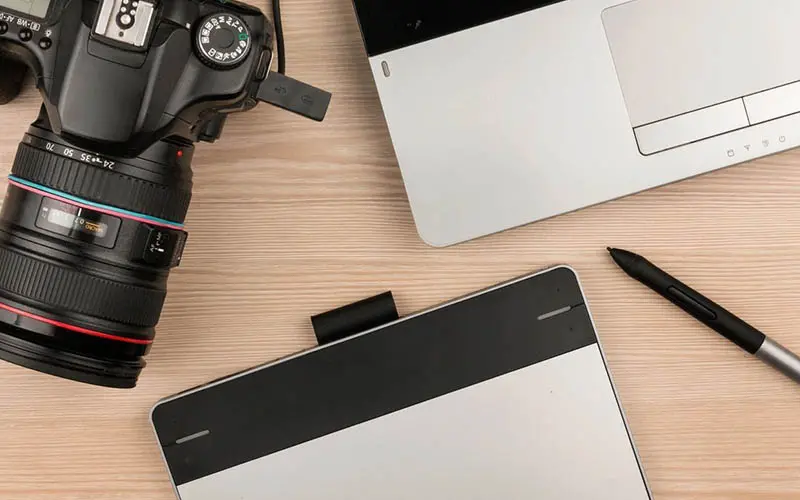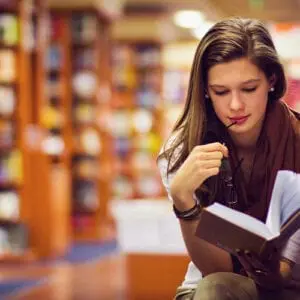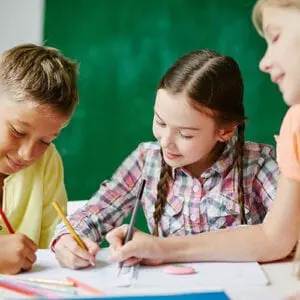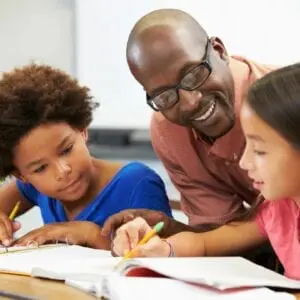Description
PEDC 9042 Photography and Photojournalism Exposed on the Web
3 Graduate Level or In-service Credits/ 45 Hours Instructor: Janice McLachlan December 1-30, May, 1-30, July 1-30, August 1-30, September 1-29, October 1-30
University of the Pacific
This course will explore the impact and medium of photography as a means of communication and historical record to convey social attitudes of our time, past and present. Every picture tells a story. We can use exciting images famous photographers and photojournalists as a motivating resource for interdisciplinary teaching in our classroom. Capture the attention of your students. Learn how to integrate famous images into your lesson plans using the internet as their virtual camera lens. NYS standards will be addressed and met on your individual curriculum area. This course is appropriate for all academic areas such as the Arts, ELA, Social Studies, Science, Foreign Language, Science, Math, for all teachers N-12.
Photography and Photojournalism Exposed on the Web Advanced Studies
3 In-service Credits/ 45 hours Instructor Janice McLachlan Email us to register for this course at creativeteachered@gmail.com
Photography and Photojournalism Exposed on the Web is also offered as a continuation course for Advanced Studies. This course is offered for in-service credit by popular student request. You must take Photography and Photojournalism Exposed on the Web as a prerequisite and then choose additonal topics not previously explored for continued advanced studies.
How will this course help educators to meet the Common Core State Standards and Next Generation Standards?
Educators will learn how to integrate Art and Art History topics across the curriculum to share in the responsibility of teaching literacy to all students through photography and photojournalism. They will learn how to teach students to show evidence of learning with informational and complex text using academic vocabulary and multiple sources through motivating multi-media experiences based on their individual grade level and subject specialization. Educators will integrate and create relevant classroom resources to meet specific Anchor Standards in ELA and Mathematics to meet course specific student learning objectives and increase academic success in preparation for college and career readiness.
How will this course benefit my classroom instruction and student learning objectives?
Foreign Language and LOTE
Teachers will learn how to create motivating culture rich experiences to facilitate in their foreign language classrooms through photography and photojournalism. Art History topics will be bridged across the curriculum to help meet the rigor of the CCSS. Teachers learn how to integrate Foreign Language and LOTE with a wide variety of multicultural Art History topics to meet the CCSS ELA Standards: Reading, Speaking, Writing, Listening and Language by creating motivating PowerPoint presentations and lesson plans in addition to a plethora of classroom resources to bring back to the classroom for increased student achievement through informational texts.
English and Language Arts
Teachers will learn how to create motivating literature rich experiences to facilitate in their ELA classrooms. Art History topics will be bridged across the curriculum to help meet the rigor of the CCSS through photography and photojournalism. Teachers learn how to integrate a wide variety of Art and Art History topics to meet the CCSS ELA Standards: Reading, Speaking, Writing, Listening and Language by creating motivating PowerPoint presentations and lesson plans in addition to a plethora of classroom resources to bring back to the classroom for increased student achievement through informational texts.
Mathematics
Teachers will integrate the topics in Art History to make connections to the mathematical practices to mathematical content in mathematics instruction through photography and photojournalism. Teachers will learn how to create a wide variety of classroom resources including lesson planning and PowerPoint presentation to help students learn how to think like a mathematician. Make sense of problems and persevere in solving them, reason abstractly and quantitatively, construct viable arguments and critique the reasoning of others.
Science
Teachers will integrate Science into Art History topics to make connections to informational text that will expose students to a broad range of genres and multi-media formats through photography and photojournalism. Teachers will learn how to create a wide variety of classroom resources including lesson planning and PowerPoint presentations to help students learn how to think like a scientist. Teachers will use Art History and Science to share in the responsibility of facilitating literacy across the curriculum by creating opportunities for students to read, write and answer questions through multiple sources with the focus on academic vocabulary and technical ideas.
Social Studies
Teachers will integrate Social Studies into Art History topics to make connections to informational text that will expose students to a broad range of genres and multi-media formats through photography and photojournalism. Teachers will learn how to create a wide variety of classroom resources including lesson planning and PowerPoint presentations to help students learn about historical events. Teachers will use Art History and Social Studies to share in the responsibility of facilitating literacy across the curriculum by creating opportunities for students to read, write and answer questions through multiple sources with the focus on academic vocabulary.
The Arts: Art, Music, Physical Education
Teachers will use the Arts and Art History topics to make connections to informational text that will expose students to a broad range of genres and multi-media formats through photography and photojournalism. Teachers will learn how to create a wide variety of classroom resources including lesson planning and PowerPoint presentations to help students learn how think critically and bridge topics to all other areas of learning. Teachers will use the Arts and Art History to share in the responsibility of facilitating literacy across the curriculum by creating opportunities for students to read, write and answer questions through multiple sources with the focus on academic vocabulary.
Special Education
Teachers will use the relevant Anchor Standards in ELA and Mathematics in conjunction with Art and Art History topics to create support and related services to students with disabilities that will expose them to a broad range of genres and multi-media formats through photography and photojournalism.Teachers will learn how to create a wide variety of classroom resources including lesson planning and PowerPoint presentations to help students learn how think critically and bridge topics to all other areas of learning. Teachers will use the Arts and Art History to share in the responsibility of facilitating literacy across the curriculum by creating opportunities for students to read, write and answer questions through multiple sources with the focus on academic vocabulary the meet the unique needs of the student.
Social Workers, Guidance Counselors and School Psychologists
Educators will use the relevant Anchor Standards in ELA and Mathematics in conjunction with Art and Art History topics to create support and related services to students that will expose them to a broad range of genres and multi-media formats through photography and photojournalism. Teachers will learn how to create a wide variety of classroom resources including lesson planning and PowerPoint presentations to help students learn how think critically, solve problems and bridge topics to all other areas of learning. Teachers will use the Arts and Art History to share in the responsibility of facilitating literacy across the curriculum by creating opportunities for students to read, write and answer questions through multiple sources with the focus on academic vocabulary the meet the unique needs of the student that will help them for college and career readiness.
Elementary Education
Teachers will use the relevant Anchor Standards in ELA and Mathematics in conjunction with Art and Art History topics to create experiences for students that will expose them to a broad range of genres and multi-media formats through photography and photojournalism. Teachers will learn how to create a wide variety of classroom resources including lesson planning and PowerPoint presentations to help students learn how think critically and bridge topics to all other areas of learning. Teachers will use the Arts and Art History to share in the responsibility of facilitating literacy across the curriculum by creating opportunities for students to read, write and answer questions through multiple sources with the focus on academic vocabulary the meet the unique needs of the student.
Secondary Education
Teachers will use the relevant Anchor Standards in ELA and Mathematics in conjunction with Art and Art History topics to expose students to a broad range of genres and multi-media formats through photography and photojournalism. Teachers will learn how to create a wide variety of classroom resources including lesson planning and PowerPoint presentations to help students learn how think critically and bridge topics to all other areas of learning. Teachers will use the Arts and Art History to share in the responsibility of facilitating literacy across the curriculum by creating opportunities for students to read, write and answer questions through multiple sources with the focus on academic vocabulary the meet the unique needs of their classroom.
Media and Technology Specialists
Educators will use the relevant Anchor Standards in ELA and Mathematics in conjunction with Art and Art History topics to expose students to a broad range of genres and multi-media and digital formats through photography and photojournalism. Educators will learn how to create a wide variety of classroom resources including lesson planning and PowerPoint presentations to help students learn how think critically and bridge topics to all other areas of learning by using technology. Teachers will use the Arts and Art History to share in the responsibility of facilitating literacy across the curriculum by creating opportunities for students to read, write and answer questions through multiple sources with the focus on academic vocabulary the meet the unique needs of their classroom.
Career and Vocational Specialists
Educators will use the relevant Anchor Standards in ELA and Mathematics in conjunction with Art and Art History topics to expose students to a broad range of genres and multi-media formats through photography and photojournalism. Teachers will learn how to create a wide variety of classroom resources including lesson planning and PowerPoint presentations to help students learn how think critically and bridge topics to all other areas of learning. Teachers will use the Arts and Art History to share in the responsibility of facilitating literacy across the curriculum by creating opportunities for students to read, write and answer questions through multiple sources with the focus on academic vocabulary the meet the unique needs of their classroom and succeed in college and career readiness.
Additional information
| Course Date | December 1-30, January 3-30, February 1-28, March 1-30, May 1-30, July 1-30, August 1-30, September 1-29, October 1-30 |
|---|






Reviews
There are no reviews yet.